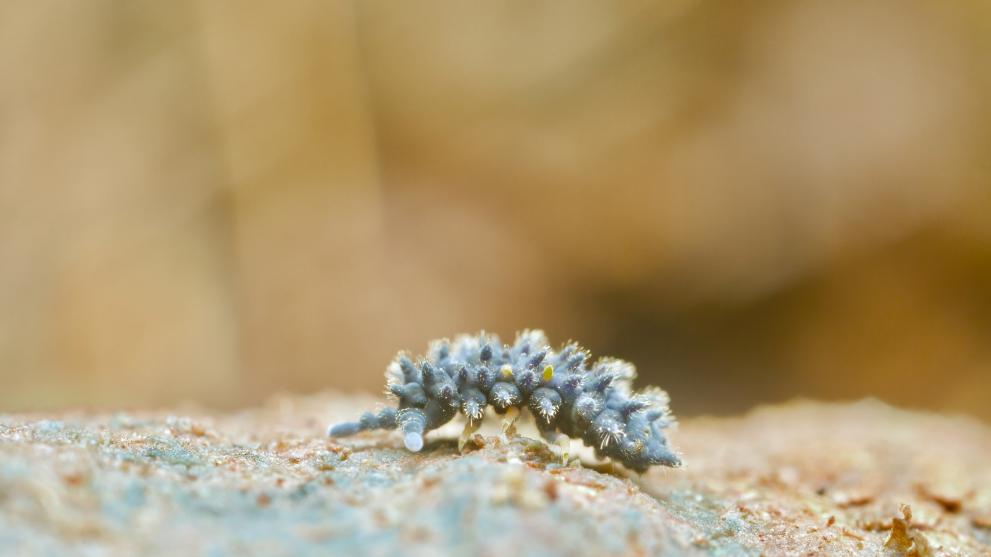
In a Science article published today, an International team of researchers calls for greater consideration of soil biodiversity and functions in international conservation strategies, particularly when deciding on nature protection priorities and policies and new conservation areas.
A quarter of all known species live in the soil. Life above ground depends on the soil and its countless inhabitants. Yet, global strategies to protect biodiversity have so far paid little attention to this habitat.
The relevance of soils must be recognised far beyond agriculture.
A global soil biodiversity and ecosystem function monitoring framework
In order to make the status and performance of soils more visible, the researchers explain their plan for systematic recording based on common global standards.
They describe a new global soil biodiversity and ecosystem function monitoring framework to be considered in the renegotiation of international biodiversity strategies, particularly in the context of the post-2020 discussions of the Convention on Biological Diversity (CBD). In order to achieve this ambitious goal, a network, Soil Biodiversity Observation Network (Soil BON), was recently put in place and is presented in the article.
A hidden world of wonders that support life as we know it
If you asked people which group of animals was the most common on Earth, hardly anyone would come up with the right answer. Not ants, not fish, not even humans - no, it is the nematodes, also called threadworms. Four out of five animals on earth belong to this group.
The reason that hardly anyone knows them is that they live below the ground, remaining invisible for most of us. Quietly and unnoticed, they perform vital services for the world above them every day - together with thousands of other soil organisms.
Soil is the most diverse habitat of all. Up to 1.5 kilogrammes of living organisms live beneath one square metre of healthy soil: threadworms, earthworms, springtails, mites, insect larvae, etc.
In addition, there are myriads of microorganisms: bacteria, protists, fungi, and many more. By eating living and dead animal and plant material, they transform it into nutrients – and without these nutrients, new life could not evolve.
Without soil organisms, no plants could grow, no people could live.
It is therefore even more astonishing that soils have so far hardly played any role in international strategies aimed at protecting biodiversity.
For the authors of the new Science article, this is a major problem:
"If we do not protect soils for future generations", they write, "aboveground biodiversity and food production cannot be guaranteed either".
Their appeal goes out to the 196 states that are currently negotiating a new strategy for the protection of biodiversity within the framework of the UN Convention on Biological Diversity (CBD).
Soils under pressure
It is high time to take action: our soils are getting less and less healthy.
They suffer from intensive cultivation with heavy machinery, fertilisers and pesticides, are compacted, covered with buildings or exposed to wind and water erosion. Global warming is putting them under additional pressure.
According to the Joint Research Centre, 970 million tonnes of soil are lost every year in Europe.
As a result, a wide range of services provided by soils, such as the provision of clean water or protection against plant diseases, can no longer be guaranteed.
Protected areas need to consider soil biodiversity
According to JRC scientist Alberto Orgiazzi, a co-author of the article:
"When setting the borders of protected areas, managers only take into account big animals or trees, without considering the unseen life beneath our feet. This attitude needs to be reversed in future conservation plans."
In order to be able to decide which regions of the world are particularly in need of protection, and which protective measures are appropriate, sufficient information must be available on the status and trends of biodiversity in soils.
Soil BON – a monitoring framework for sustainable soils

Since this has not been the case so far, a group of researchers, educators, and policy advisors from academic, governmental, and private sectors have recently launched the Soil BON.
Soil BON will help collect comparable soil data across the board and over long time periods.
Standardised rules are necessary worldwide to determine what should be recorded and how. The researchers propose a holistic approach for this based on Essential Biodiversity Variables (EBVs).
EBVs are key priority variables for measuring biodiversity and its change. In the case of Soil BON, these include parameters such as soil respiration, soil enzyme activity, nutrient turnover and genetic diversity.
Indicators are derived from the EBVs, which serve as a basis for decisions on the assessment and protection priorities of soils.
According to the authors of the article, the proposed monitoring and indicator framework enables the efficient recording and long-term tracking of the global state of soils and its functions. They emphasise that it can also serve as an important early warning system: with its help, it can be recognised at an early stage whether ongoing measures can achieve the policy targets that have been set.
"The recently established European Soil Observatory (EUSO), along with the well-consolidated LUCAS Soil survey, can make important contributions to the development of Soil BON, whose mission fits well with one of EUSO goals: providing policymakers with the necessary information to support decision-making", said Luca Montanarella, soil team leader at the JRC.
"The EUSO will be a key contributor in Europe to support the production of the relevant data to achieve this goal ".
The EU nature restoration plan
Healthy ecosystems require healthy, diverse and functional soils.
A recent EU ecosystem assessment carried out by the JRC concluded that Europe’s ecosystems are under increasing pressures. As ecosystems are destroyed, the supply of their essential services is also declining. An ambitious EU nature restoration plan, proposed in the biodiversity strategy for 2030, needs to bend the curve.
Restoring degraded soils and defining the conditions for their good ecological status are key to restoring ecosystems.
Further information
Related Content
Details
- Publication date
- 15 January 2021
